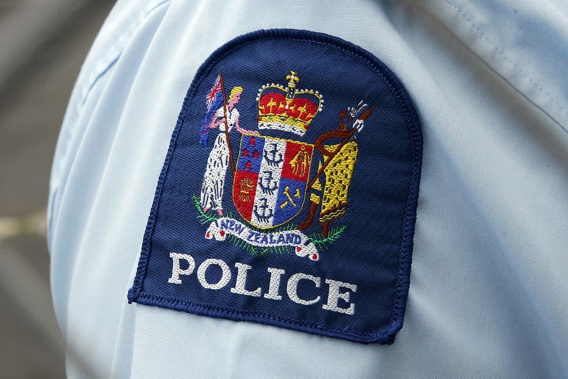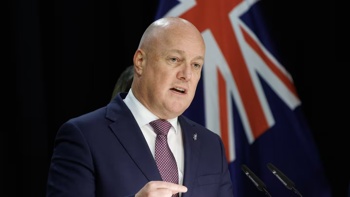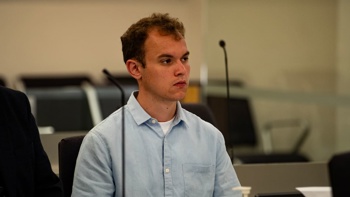

The independent police watchdog has found officers used excessive force against two youths when arresting a group fleeing in a stolen car.
Bystanders recorded the dramatic arrest in East Auckland and posted the footage to social media, leading to claims of police brutality, and one officer being charged.
The video, which showed an officer punching one of the young men several times in the head, was considered by the Independent Police Conduct Authority (IPCA) during its investigation into the September 26, 2022, arrest.
Today, the IPCA released its report on the incident in which it found the force used by two police officers to apprehend two of the youths was unjustified.
According to the report, police arrested five youths, aged between 10 and 14, after pursuing and stopping them in a stolen car.
Officers had stopped the fleeing driver by blocking the car at both the front and back so it could not move.
The recorded footage showed officers ran towards the vehicle as soon as it stopped.
At the same time, the young people inside the car began exiting. Officers immediately took hold of the driver and passengers, pulled them out of the car, and took them down to the ground to handcuff and arrest them.
The driver and one of the rear-seat passengers were detained without significant use of force. However, the video footage showed officers using significant force to detain the front seat passenger and two from the back.
The front seat passenger, aged 14, was partially out of the car when an officer, referred to as Officer A in the report, pulled him out and down onto the road.
Video footage shows Officer A punching the boy several times to the back of his head and back while he was lying face down on the ground.
Officer A then handcuffed him and took him to a nearby patrol car.
Another officer, Officer B, was recorded pulling a 10-year-old from the rear seat and onto the ground.
Another officer helped Officer B move the child to an area behind the stolen vehicle, so they had space to handcuff him.

The Independent Police Conduct Authority found two police officers used excessive force in the arrests. Photo / Wayne Drought
However, the footage appeared to show Officer B kicking out at the 10-year-old while he was on the ground, being held by Officer D.
According to the report, Officer B denied kicking the boy. He stated the boy had grabbed his leg, so he “softly pushed out with my right leg to prevent being grabbed” as he was concerned he would be pulled to the ground.
A third young person from the backseat, aged 11, got out of the car and immediately crouched next to the rear wheel.
Another officer, Officer C, appeared to grab him by the upper arm and drag him roughly across the road to where he was handcuffed.
The report stated it appeared that the boy was not allowed to get up and walk.
“He appeared compliant up to the point he was grabbed and there was no reason for Officer C to believe that there was a need to preempt resistance from him,” the IPCA found.
Following the arrests, members of the public who had seen the footage online complained to the IPCA. Police also notified the authority of the incident two days later.
The IPCA’s investigation did not assess the justification for or execution of the pursuit and focused solely on the force used by the officers.
“Our investigator considered the law in relation to use of force, interviewed six officers as well as the five youths, and analysed both Eagle footage and the video footage taken by bystanders.”
Officer A admitted to using excessive force against the 14-year-old and police charged him with common assault.
He pleaded guilty to that charge and was discharged without conviction. The IPCA agreed with the police’s decision to charge him.
The IPCA did not accept Officer B genuinely believed the 10-year-old could pull him down to the ground.
The authority noted he was a child who was already being held by Officer D at the time.
“In our assessment, even if [the boy] did try to grab hold of his leg, Officer B would have been able to either overcome this physical resistance or simply step back.”
In regards to the 11-year-old who was dragged, the mother reported her son had returned home with grazes on his hands and a black eye.
However, the IPCA was not able to speak to the boy and ascertain how the injuries occurred.
“The grazed hands could have occurred when [the boy] was dragged across the road. However, the video footage shows that his upper body was lifted off the ground. The footage does not show any actions by Officer C that could have caused a black eye.”
The IPCA accepted that officers have to balance their actions against the urgency of the situation, the risk the occupants will flee, and the need to get the occupants away from the car for safety reasons and so they can be properly secured.
But in this case, the authority found, that while the arrests were justified, Officer A used excessive force when arresting the 14-year-old.
Officer B’s actions in lifting and dragging the 10-year-old from the car were reasonable in the circumstances however he subsequently used excessive force.
The force used to detain the driver and one of the other rear seat passengers was reasonable and justified.
Officer C’s actions in lifting and dragging the 11-year-old from the road to a safer location were reasonable in the circumstances.
Tara Shaskey joined NZME in 2022 as a news director and Open Justice reporter. She has been a reporter since 2014 and previously worked at Stuff covering crime and justice, arts and entertainment, and Māori issues.

Take your Radio, Podcasts and Music with you









